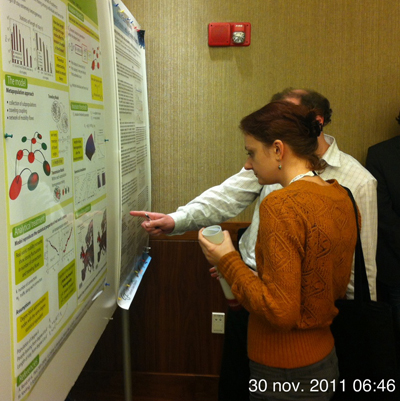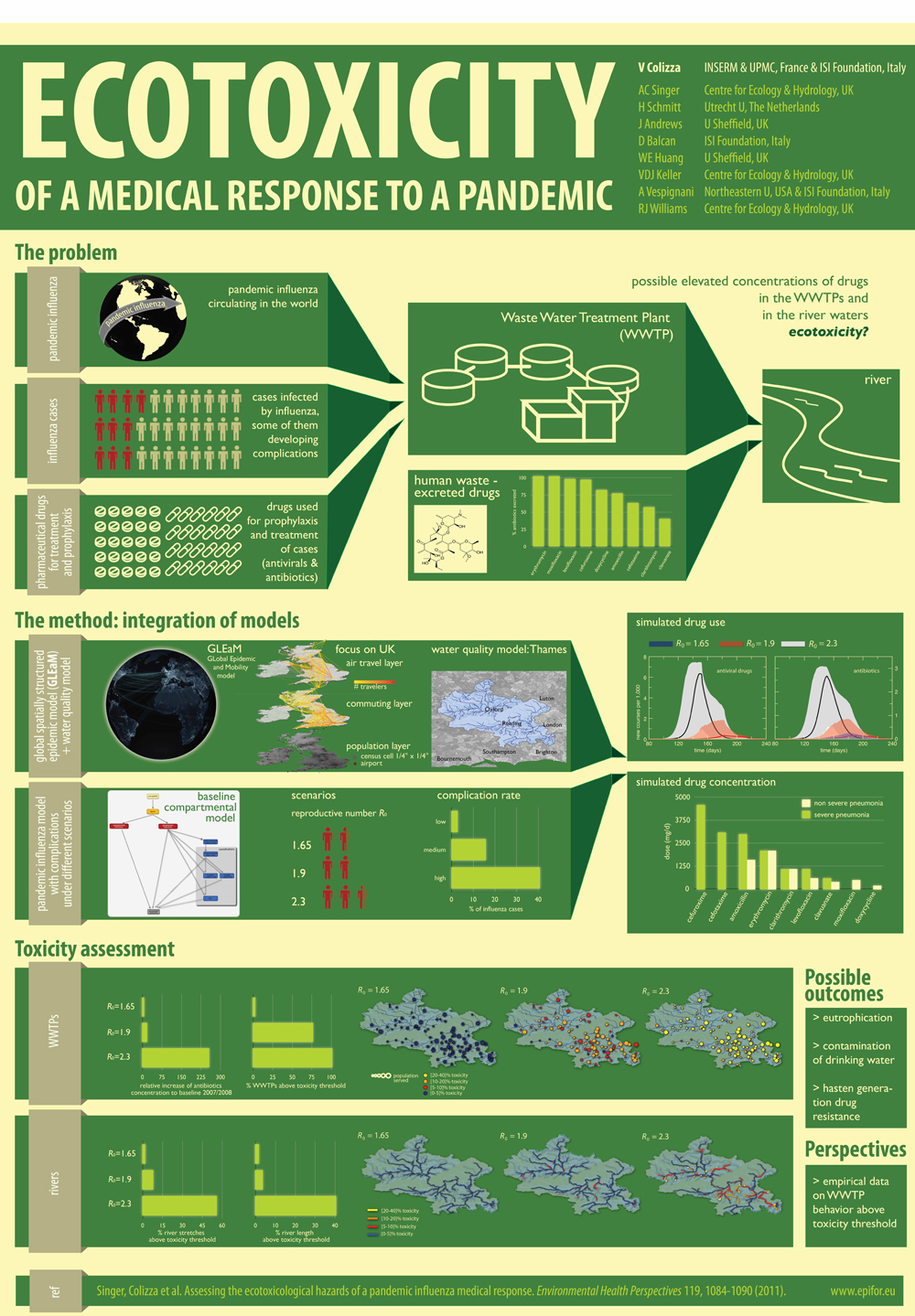talks, outreach
Epifor @ Epidemics3 Dec. 1, 2011
![]()
Several works developed within the Epifor project have been selected to contribute to the Third International Conference on Infectious Disease Dynamics “Epidemics3” that is taking place in these days (Nov 29 - Dec 2) in Boston, MA, USA.
Epidemics3 is a wide-ranging conference that deals with infectious disease dynamics in the broadest sense: it includes modeling as well as field and laboratory studies. The conference scope covers both within-host dynamics of infectious agents and dynamics at the population level, particularly the interaction between the two. Areas of emphasis include: spread, transmission, population and public health as well as policy aspects of control and prevention.
Epifor contributes with 5 poster presentations, with topics ranging from the interplay between disease host mobility and epidemic spreading to the eco-toxicological impact of massive drug usage during an epidemic emergence.
Assessing the ecotoxicologic hazards of a pandemic influenza medical response:
In the case of a pandemic influenza, a large amount of drugs may be used to treat influenza cases and patients with pulmonary complications. How and to what extent could such a large drug usage impact our environment when released through human waste? The work couples three different models - an epidemic model, a water quality model, and a toxicity assessment model - to simulate synthetic pandemics of varying contagiousness and severity to estimate the concentration of drugs in rivers and assess their toxicity in the river water and on the functioning of waste water treatment plants. Have a look at the paper here!
The GLEaMviz computational tool, a publicly available software to explore realistic epidemic spreading scenarios at the global scale: GLEaMviz Simulator is a multiplatform application that allows to
- run simulations to assess epidemic scenarios
- predict infectious disease spread
- manage health emergencies
It is based on GLEaM, a stochastic metapopulation approach that integrates high-resolution sociodemographic and mobility data to simulate the spread of epidemics at the worldwide scale. GLeaMviz Simulator allows you to explore your epidemic simulations through a highly flexible disease model, a customizable simulation scenario, and an easy to use visualization platform. Download the software and run your simulations!
Human mobility networks, travel restrictions and the global spread of 2009 H1N1 pandemic: Travel-related and mobility restriction policies are often considered to be the first line of defense against the spread of an emerging infectious disease. The wide range of implementation scenarios of such policies calls for models that are able to anticipate their actual effectiveness. Taking advantage of the high detailed mobility data at the global level integrated in GLEaM, we assessed the impact of different travel reduction policies in the unfolding of the simulated pandemics. The work shows that feasible mobility limitations, highly disruptive in economic terms, generally are not effective. Have a look at the poster here!


Posts by category: awards/honors, news, outreach, publications, research, talks, team news





